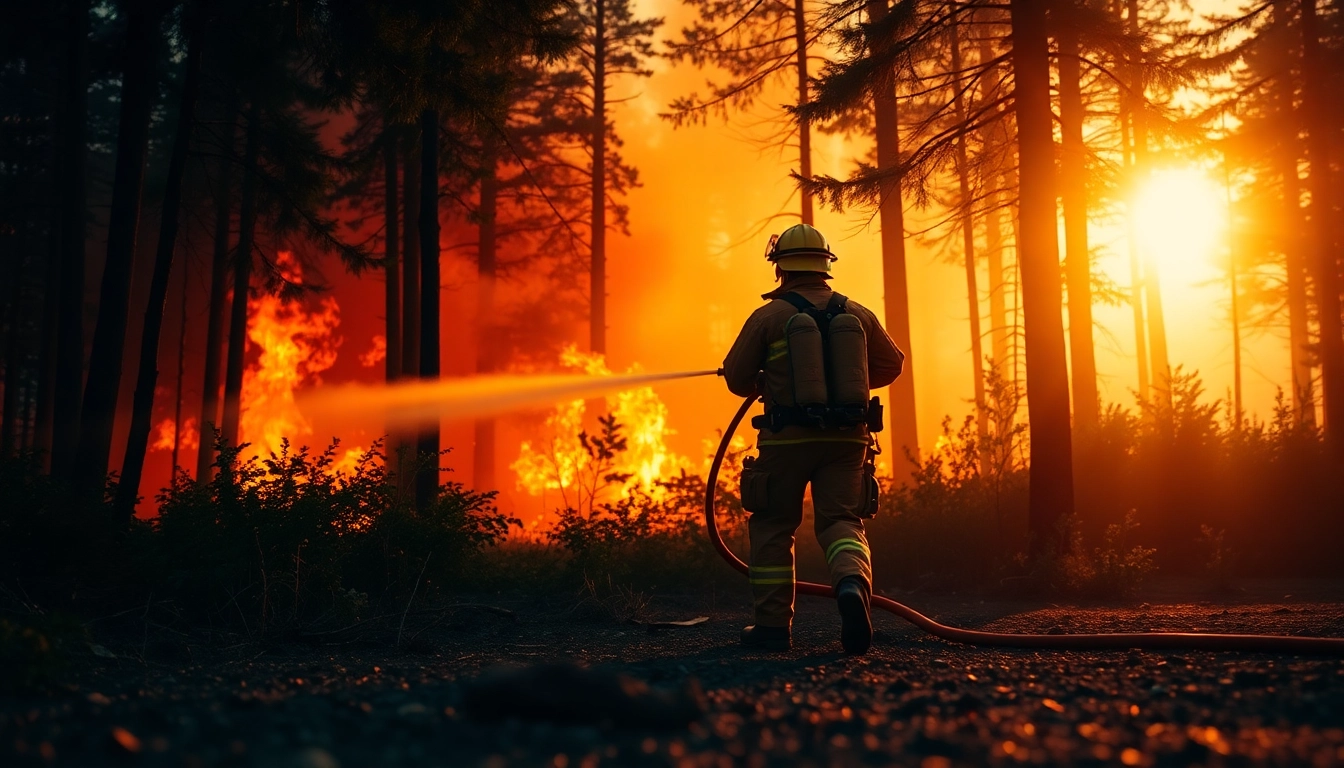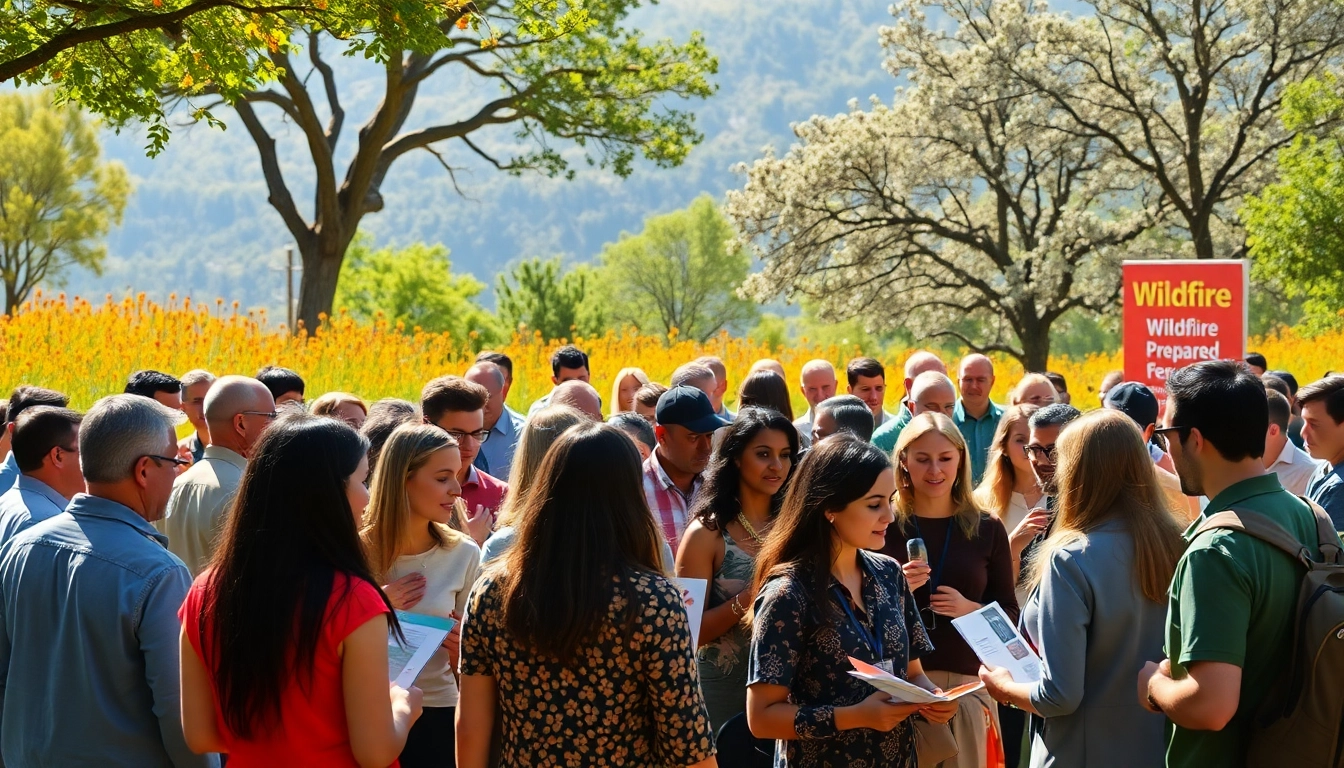The Importance of Understanding Wildfire Events
Wildfire events are becoming increasingly frequent and severe across the globe, posing significant threats to both natural ecosystems and human communities. Understanding these phenomena is crucial for effective management and mitigation efforts. By exploring the implications of wildfire events, we can develop more sustainable practices that protect our environment and ensure the safety of affected populations. This holistic understanding contributes to better strategies for managing wildfire events, enhancing community resilience and environmental awareness.
How Wildfire Events Affect Ecosystems
Wildfires play a complex role in ecosystem dynamics. While they can devastate local flora and fauna, they also stimulate regrowth and nutrient cycling in many biomes. Fires can clear dead vegetation, thus allowing sunlight to penetrate the forest floor, promoting the growth of new plants and diversity in species.
For example, certain tree species, such as the lodgepole pine, rely on fire to germinate their seeds. The heat from wildfires can crack open their cones and facilitate the regeneration of forests. This dual role of destruction and renewal illustrates the necessity for balanced ecosystem management.
However, when wildfires become extreme, they can lead to long-term ecological damage. Loss of habitats can threaten biodiversity, leading to the endangerment of species and disruption of food chains. Moreover, soil erosion becomes a critical concern as vegetation is stripped away, increasing the risk of landslides and further degrading the environment.
The Societal Impact of Wildfire Events
The societal impacts of wildfire events extend beyond immediate loss of property; they affect public health, economy, and community cohesion. Displacement of families and loss of homes can create significant emotional distress and strain local resources.
Economically, wildfires can devastate local businesses, particularly those reliant on tourism or agriculture. The cost of firefighting efforts, recovery, and rehabilitation can burden state and federal budgets. For instance, the economic impact of the California wildfires in 2020 was estimated at nearly $20 billion, factoring in loss of homes, firefighting costs, and other auxiliary expenses.
Moreover, wildfires emit significant amounts of carbon dioxide and particulate matter into the atmosphere, exacerbating air quality issues and posing health risks for communities. Vulnerable populations, including the elderly and individuals with pre-existing conditions, may suffer disproportionately during and after wildfire events.
Types of Wildfire Events and Their Characteristics
Wildfires can be classified into several types, each with unique characteristics:
- Surface Fires: These fires burn along the forest floor, consuming dead leaves, grass, and other dry materials. They typically allow trees to survive as they burn cooler and slower.
- Crown Fires: These intense fires spread through the tree canopy, often leading to widespread destruction. Crown fires are driven by dry conditions and high wind speeds.
- Ground Fires: These smoldering fires burn in the organic matter beneath the soil surface and are often difficult to detect. Ground fires can persist for long periods and reignite surface fires.
Understanding these different types helps firefighters and land managers develop appropriate response strategies and increase the effectiveness of prevention measures.
Preventative Measures Against Wildfire Events
Prevention is key to managing wildfire risks effectively. By implementing best practices and innovative approaches, communities can significantly reduce the likelihood and severity of wildfire occurrences.
Best Practices in Fire Management
Fire management practices involve an integrated approach combining fire prevention, preparedness, and response strategies. Effective forest management practices include:
- Creating Defensible Space: Homeowners are encouraged to create defensible space around their properties by clearing flammable materials, cutting back vegetation, and maintaining a buffer zone to stop fire spread.
- Regular Controlled Burns: Controlled or prescribed burning is a proactive measure that helps reduce fuel load and mitigate the intensity of future wildfires.
- Firebreaks: Establishing firebreaks or cleared areas devoid of vegetation can prevent fires from spreading rapidly, giving firefighters a strategic advantage.
Community Preparedness for Wildfire Events
Community engagement is vital in wildfire preparedness. Local governments and organizations should involve residents in planning and training. Some effective community preparedness strategies include:
- Awareness Campaigns: Informing the community about wildfire risks and promoting fire-safe practices can increase individual and collective preparedness.
- Emergency Plans: Developing and sharing evacuation plans can ensure residents know how to react in a wildfire emergency.
- Resources and Training: Offering workshops and training sessions for community members on fire safety and emergency response can empower individuals to act decisively.
Technological Innovations in Wildfire Prevention
Advancements in technology are revolutionizing wildfire prevention efforts. Key innovations include:
- Predictive Modeling: Algorithms that analyze weather patterns, humidity, and topography can predict wildfire behavior and help in resource allocation.
- Remote Sensing Technologies: Drones and satellite imagery provide real-time data about fire spread and hotspots, enabling more efficient firefighting strategies.
- Smart Sensors: Installations of sensors that monitor temperature, moisture levels, and other indicators of fire risk can provide early warning signals.
Responding to Wildfire Events: An Emergency Guide
Quick and effective response to wildfire events can save lives and minimize property damage. This section outlines crucial steps for emergency actions.
Immediate Actions During Wildfire Events
When a wildfire threatens your area, immediate actions are critical:
- Stay Informed: Keep track of evacuation orders, fire status updates, and local emergency services through local news and official channels.
- Prepare an Emergency Kit: Assemble essential items such as water, food, medications, and important documents.
- Evacuate Early: If an evacuation order is issued, do not delay. Attempting to leave late can lead to dangerous conditions on the road.
Evacuation Plans and Safety Protocols
Having a well-structured evacuation plan can save lives. Effective protocols include:
- Designated Routes: Plan multiple evacuation routes in case one becomes inaccessible due to fire or traffic congestion.
- Reunification Plans: Establish a plan for families to reunite after evacuating, including designated meeting places and communication methods.
- Communication Systems: Ensure everyone in the household knows how to receive emergency alerts and communicate during a wildfire situation.
Post-Wildfire Recovery Strategies
Post-wildfire recovery involves a multi-step approach to restore communities and ecosystems:
- Assessing Damage: Conduct a thorough evaluation of damage to properties, infrastructure, and natural resources to create a recovery plan.
- Rebuilding and Rehabilitation: Prioritize rebuilding efforts that incorporate fire-resistant materials and landscaping practices to enhance future resilience.
- Community Support: Providing emotional and financial support for affected individuals helps foster community resilience and healing.
Education and Awareness on Wildfire Events
Education plays a vital role in wildfire prevention and preparedness. By raising awareness within communities, we empower individuals and organizations to take proactive measures against wildfire threats.
Community Workshops and Training Sessions
Providing opportunities for community members to engage in educational workshops fosters greater understanding. Effective programs include:
- Fire Safety Courses: These courses educate homeowners on fire-safe landscaping, emergency preparedness, and the importance of maintaining defensible space.
- First Aid Training: Teaching basic first aid and emergency response strategies prepares community members for quick actions during wildfires or evacuations.
- Firefighting Techniques: Hands-on training in firefighting techniques, such as using extinguishers and understanding fire dynamics, can be interactive and empowering.
Resources for Educating the Public
Numerous resources are available to support educational efforts, including:
- Local Fire Departments: Partnering with local firefighters can provide credible information and expertise to community programs.
- Online Platforms: Utilizing websites and social media for disseminating educational materials can reach a broader audience.
- Government Agencies: Leverage resources from agencies like the National Interagency Fire Center to access research, informational pamphlets, and training schedules.
Successful Case Studies of Awareness Campaigns
Effective awareness campaigns can have substantial impacts on community preparedness. Notably:
- California’s Fire Prevention Campaign: This campaign highlights personal preparedness through media advertisements, community workshops, and interactive events, significantly increasing public participation in fire safety initiatives.
- Oregon’s Fire Awareness Program: The state has implemented educational programs that successfully decreased wildfire incidents by engaging residents in fire safety practices.
- Community Partnerships: Collaborations between nonprofits, schools, and emergency services can amplify outreach and educational efforts, ensuring consistent messaging across communities.
Future Trends in Wildfire Events Management
As climate change continues to impact weather patterns and vegetation, the future of wildfire management will rely on adaptive strategies that account for these changes. Here’s an overview of emerging trends.
Climate Change and Its Role in Wildfire Events
Climate change is significantly influencing the frequency and intensity of wildfire events. Rising temperatures and prolonged drought conditions create an optimal environment for wildfires to ignite and spread:
- Increased Fuel Availability: Warmer and drier conditions lead to higher accumulation of dead plant material, exacerbating the risk of wildfires.
- Longer Fire Seasons: Climate studies suggest that the typical fire season is extending, giving wildfires more opportunity to occur and thrive.
- Shifting Ecosystems: Changes in vegetation types will influence the dynamics of fire spread, necessitating adaptive management approaches to protect vulnerable ecosystems.
The Role of Policy in Wildfire Management
Policy frameworks play a critical role in guiding wildfire management efforts. Some trends include:
- Stricter Building Codes: Implementing fire-resistant building standards in fire-prone areas can help protect homes and businesses.
- Funding for Prevention Programs: Increasing government funds for wildfire prevention initiatives ensures that communities are better equipped to handle wildfires.
- Restoration Initiatives: Policies focused on restoring landscapes damaged by wildfires promote ecological recovery while reducing future wildfire risks.
Collaborative Approaches to Wildfire Events
Collaboration among stakeholders will be key to effective wildfire management. Some emerging collaborative approaches involve:
- Community Partnerships: Engaging local communities, landowners, and volunteers ensures a unified approach to wildfire preparedness and response.
- Public-Private Collaboration: Partnerships between government agencies and private organizations can leverage additional resources, technology, and expertise.
- International Cooperation: Sharing best practices and lessons learned from global wildfire events can improve strategies across borders and enhance collective readiness.



